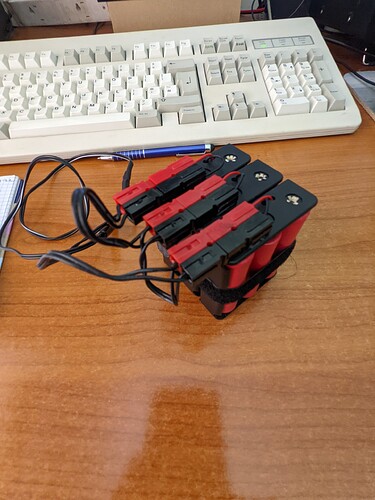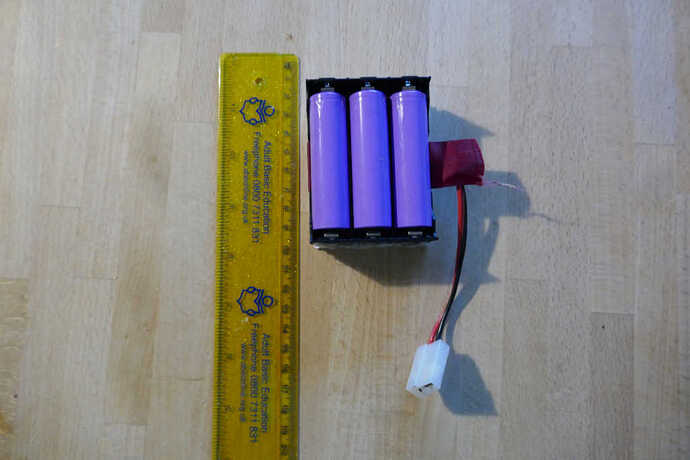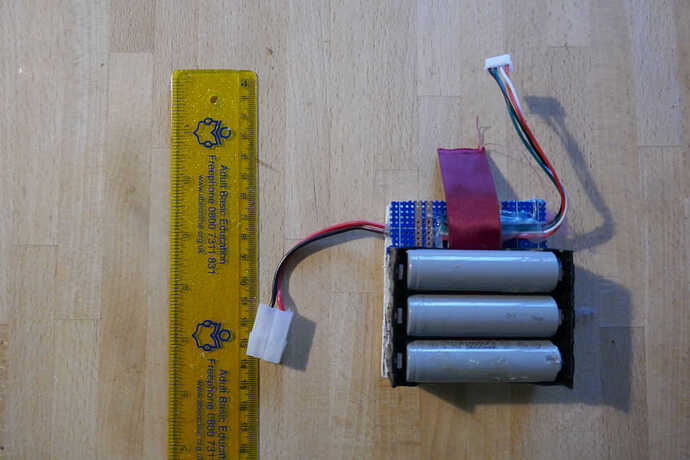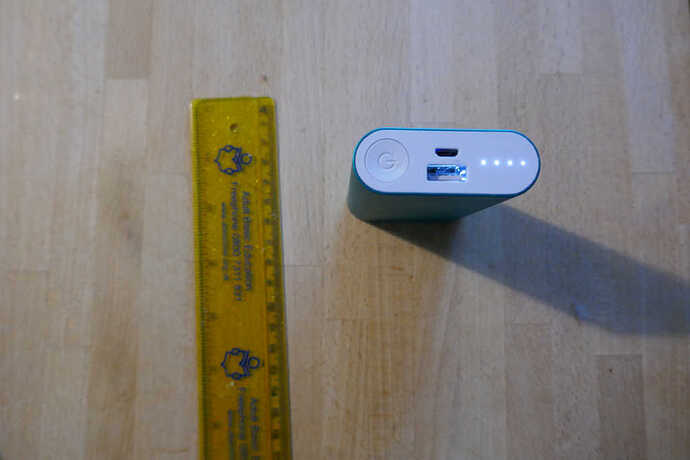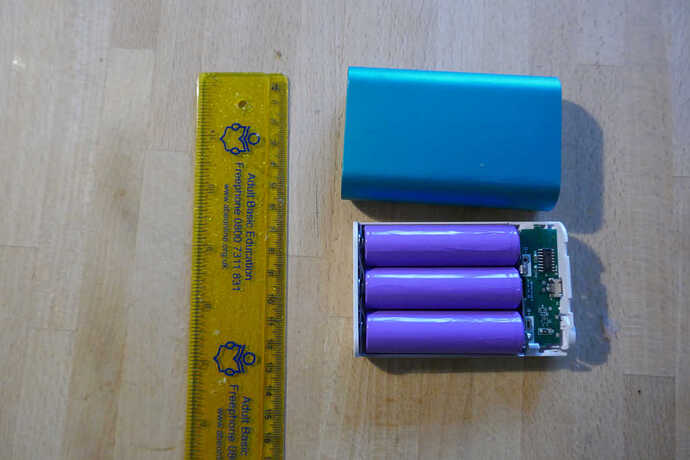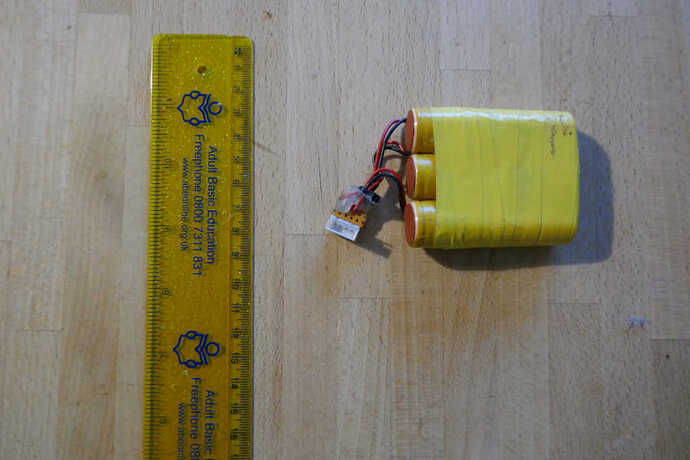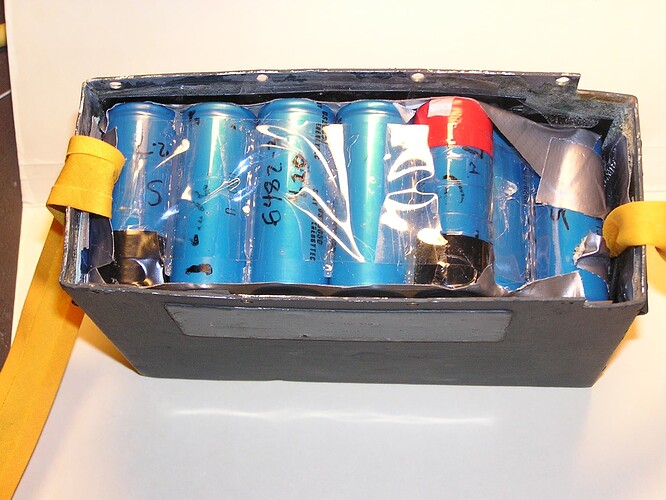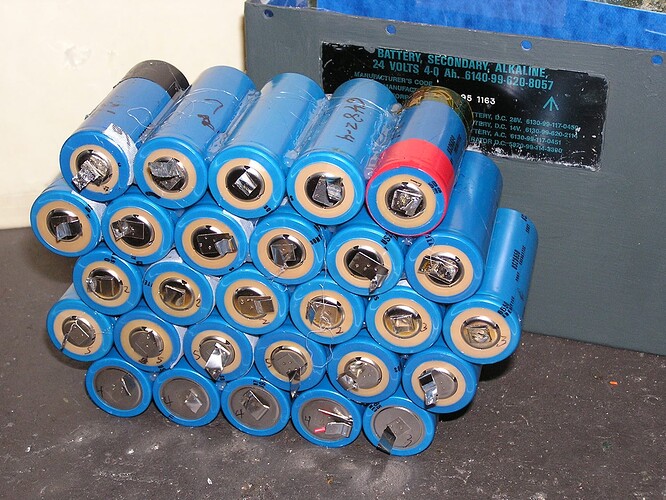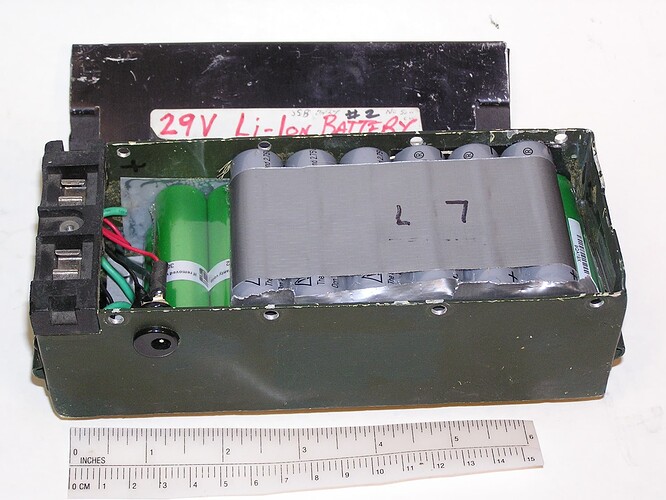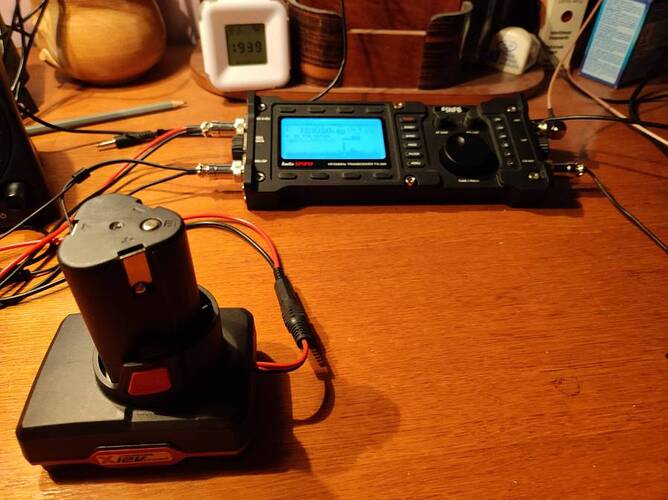How many are using Li ion batteries (rather than Lipo or LiFePO4)? The popular 18650 batteries are usually (always?) Li ion. They are very similar technologies but with a different electrolyte. Li ion have higher energy density but can’t supply the very high currents that Lipo can. Confusingly, I’ve read that Lipo are safer and also that Li ion are safer!
Hi Richard,
Lithium-Ion (Li-Ion) batteries are most often used as laptop batteries and in handy talkies. They must be fairly sturdy as they take a lot of abuse during charging while they are never balance charged as far as I know. I suppose the very latest laptops could have batteries with a built-in BMS but I doubt it.
Ed.
All Li-Ion packages are balanced in all notebooks.
73, Peter - HB9PJT
I like my xt powerbank…
It provides 50 watts. That’s easily enough for my KX2 and I can charge my iPhone in parallel.
I see the charge status and can charge it on the road in the car
73 Armin
Richard,
My homebrew batts are 2.2Ah Li-ion and are either 3cell or 4cell. The 18650s are ex-laptop or ex-garden solar lights and they are balance charged with a Turnigy Accucell 6 (bought with a Zippy 8.4mAh Li-Fe 4S2P battery) which stops when fully charged. I always start an activation with the Li-ion batts in order to gauge how long they last. But, I need to do a proper test and record their performance as I seem to get a mixed response from them.
73, Lea M0XPO
I use 4x18650 in a 4-way holder to power FR818 and another set for the PX-M50 amp. This will typically last me a week of backcountry SOTA - say 10-12 summits operating with care -eg earphones & using 10w where possible and keeping calls sparse.
This balances well with both radio & amp batteries depleting at similar rates (though tx/rx ratio will affect this)
It will also comfortably do 2hrs intensive pileup on 20w. But probably not a second one.
Currently using LG 3000mAh batteries which after 1.5 years, maybe 40 cycles are taking 2800mAh to charge from too-flat-to-operate radio/amp.
I use a miboxer c4-12 charger which charges 4 batteries, lets me select charge rate up to 3A monitors temperature, displays mAh used to charge, etc. Generally charge at 1.5A max which seems to be default.
These are an INR blend, think the various LI chemistries are now blended so the old INR vs IMR vs ICR choice is not as straight forward as it was.
But example discussion attached anyway:
I have a buddy who gets me reclaimed li ion 18650’s from old laptop batteries. I have any amount of ones with a claimed capacity of 2100mAH. I’ve made a 3S3P pack that gives a theoretical capacity of 6.3AH. I havent done any discharge testing to see what the capacity actually is. The only snag is they have to be removed and charged individually (in groups of 4 with a nitecore i4 charger). It’s pretty compact for 6AH.
What’s that keyboard in the background? Looks nicely old school, maybe mechanical? The lack of windows keys gives it away 
I think it’s an IBM PS/2 keyboard Mark. Seen enough of them in my career!
73 Ed.
Yes, PS/2 or AT 101 key (no Windows key) or 102 if it has the Windows key. The one that went “CLACK CLACK CLACKETY CLACK” when you typed. Brilliant keyboards.
It’s an old cherry keyboard. PS2 connector. Proper clackety clack mechanical keys. I have it since probably late 80’s. Boxes and operating systems come and go. The keyboard stays.
Colm,
I used to charge my 18650’s individually too but then I bought some 3 & 4 cell balancing cables and now charge them using the Turnigy Accucell 6. If I’m in a rush, & when set at 5A, a 4S takes about an hour to recharge.
73, Lea M0XPO
except I’d need a nine way charger for that pack, otherwise, I’m dismantling it anyway 
I’ve seen 3400mAh 18650’s for sale. I might splash out and get some. A 3S3P pack of those would keep me going for days !
Hi,
No you wouldn’t need to dismantle anything as the Turnigy allows you to select up to 6S when performing a balance charge.
73, Lea
Andy’s 18650 management systems
This is a 3x 18650 holder terminated in the same connector as my big LifFePo and LiPo battery packs. This gets used on SOTA expeditions where flying is involved. This holder without cells goes in the checked luggage. Pull on the red ribbon to pop the cells out of the holder nice and easily.
I prefer to charge the cells on my Imax B6 and so I have this holder which is the same as the previous but also has a balance charge connector.
To get cells through airport security, I have a number of these USB powerbanks. When assembled, it looks like every other USB powerbank the airport security screeners see every day.
The unit will charge the 18650 cells slowly and works as a USB power bank. It slides apart and holds 3x 18650. The cells are removed to power the 817.
This is one of the original 3x 18650 packs I made back 2012 or so. I actually got these through airport security to Madeira without any questions  I wouldn’t try now. It uses a balance cable only to charge and discharge.
I wouldn’t try now. It uses a balance cable only to charge and discharge.
I spent quite a while thinking about this back in 2020 and made a lot of mistakes and bad assumptions, most of which are summed up on my blog - Radio Power in the Field - Follow on
The summary is:
I went for 4S as 3S didn’t seem to provide enough voltage for my FT-891 which was my initial target for the pack. I am not sure whether this was a bad or good decision.
I got one of these on the assumption I could avoid spot welding and charge via assembly/disassembly, but it wasn’t up to constant rebuild, spot welding would have been smaller/lighter.
I bounced off the wall with BMSes - there’s just something I’m not getting.
I made the incorrect assumption that it would DC/DC my 16.8V (4S fully charged) to the labelled 14.8V, which was within the safe range of my radios.
I also damaged one through general use in 2-3 charge cycles in a manner I couldn’t explain, and then did it again to a second.
I resorted to an external balancing charger (Tunigy Accucell S60) and having no BMS in the battery pack.
DC/DC conversion is really expensive in your power budget, it actually worked out better for me to under-charge the battery into the radio’s safe zone instead of dropping 2V@10A (in the case of my FT-100/FT-891).
I think I’m lucky that my G90 accepts the full range of the 4S2P battery pack I built without arguing, and it lasts a long ol’ time. Next time I’d do it differently and go LiFePO4 in 4S, or buy a hobbyking pack pre-built ![]()
I have been using the Sony US26550 cells for a long time and now using Tenergy Cells when I can find them. The first Sony cells cost about $40 per cell in 1999.
i use 14 cells in my PRC319 big battery case (2P7S) and 7 cells (7S) in the small battery case.
Now I have quite a few of the ‘Ultra Fires’ because they are running $3 each.
The old ‘Batteryspace’ controllers that i was first using balanced the cells using negative balancing (discharging the energy of the best cells into a resistor). They actually discharge all the best cells to be the same as the weakest cell. That doesn’t make to much difference when you have all brand new cells, but if you have mixed used cells like me or one cell starts to become weak in the string, the negative balancing lowers the battery capacity (total energy).
I don’t want to be carrying around cells that are not fully charged.
The technique i use is to use ‘positive (charge) balancing’. All the cells are charged up (individually) to their maximum capability.
Then i use them, so i get more top end (29v to 21v) energy out of them. i never use the bottom end energy (below 20v) anyways because the PRC319 quits operating at 20V before the under voltage protector cuts in.
The negative balancing helps you get more energy out of the battery, but only if you go all the way down to the bottom of the usable battery voltage specification. If you drew a Schmoo Plot, you would see that. Positive balancing is not really ‘balancing’ it is just topping off all the cells, and gives you more usable energy for your radio.
i have a quite a few 28V batteries around and it is really hard to really know how good they are by checking the top battery voltage.
i frequently run discharge tests on them to see how much total energy they have.
Most of them last longer than i am able to physically operate but it is good to know what they are capable of.
(in Nov. 2016, i took 2 batteries for a 5 hour operation on Pikes Peak, @20F
and made 110 Q’s).
Of course the cell manufacturers may use a different top of charge, rate of discharge and end of charge voltage values to rate their cells than i do, So comparing the rated cell capacity (Amp Hours) is not usually helpful.
i have seen 26650’s rated from 3500 to 9000 mAH (which is impossible)…
My top charge LiIon battery voltage is 29.4V (4.2V per cell) and my ‘end of discharge’ limit is 21V (3.0V per cell) under load. i use 21V as the lower discharge limit because my PRC319 starts to drop out (Zeroize) at 20V when running 50W on CW. When it drops out it looses memory and you end up having to reinstall the memories.
To make these measurements i use an automatic battery discharger that has a 12 ohm, 50 watt, air cooled resistor in it.
i discharge the battery under test at 2.3A for 15 minutes and then let it rest for 15 minutes using an automatic timer. That is an arbitrary 50% ‘On’ duty cycle. The load is disconnected automatically at 22V by the dropout of a 12V relay and an 18V Zener diode.
(Discharging a 28V LiIon battery could deplete it to destruction if it isn’t turned off before 18V, or 2.5V for any single cell. Battery collapse can occur very quickly after 22V, so when discharging a battery you have to monitor the end of discharge closely or your entire battery can be wrecked. i am The Battery Management Controller.
i only use Hard Carbon LiIon cells without an individual cell controller or a Battery Management Controller. If you use a different type of chemistry you will have to find the voltages and limits for your type, and you might need a fire suppression bag :
http://www.ebay.com/sch/i.html?_nkw=lipo+fire+bag.
i really don’t want to use a battery that comes with a fire suppression bag.
In actual operation my PRC319 draws about 6A @ 28V on 50W CW, but i didn’t want to stress the battery with that high current condition in this bench discharge test.
(The regular high capacity LiIon 26650 cell is rated at 8A max, so it is capable of operating the 50W PRC319. The 18650 cells are rated at 3.6A max so you should use at least 2 in parallel (2P7S) for high current operation).
The actual field operational time of radio depends on the time in use, the power, mode and duty cycle of transmissions. These discharge tests tell me when i have a bad cell(s) in the battery.
A run-time clock in the tester records the total discharge time to 21V. i use that run time and an average current of 1.8A to calculate the battery capacity (Amp Hours). This procedure gives me a fairly repeatable battery capacity measurement.
This procedure allows me to find weak cells when the battery uses paralleled cells.
Learn more about battery fuel gauges at https://www.maximintegrated.com/en/app-notes/index.mvp/id/3958.
Here are some of the results from my discharge tests, Probably too much information but
might be useful to someone:
-
Batt # 1: is a (4AH) Big Clansman battery case, it has 28 - 18650 cells in it wired 4P7S,
The Ultrafire cell case is marked (optimistically) 3.8 AH.
This 28 cell battery weighs about 5 pounds.
My Discharge results were: 1.8A x 3.75 Hrs = 6.75 AH. -
Batt # 2: is a (1AH) Little Clansman battery case, it has 21 - 18650 cells wired 3P7S,
The Ultrafire cell case is marked 3.8 AH, ha ha. They are 5 years old.
My Discharge results were: 1.8A x 2.3 Hrs = 4.1 AH. -
Batt #3: is in a Big Clansman battery case, it has 14 new ( 2 year old) Tenergy 26650 (p/n 30062)
cells in it. Wired 2P7S.
The 14 - 26650 cell battery weighs about 3 pounds.
My Discharge results were: 1.8A x 4.21 Hrs = 7.6 AH. -
Batt # 7: is in a Big Clansman case, it has 14 new Ultrafire CN26650 cells in it.
Wired 2P7S. These cells cost $1.59 each on ebay. The Ultrafire cell case is marked 7.2AH, but they are probably rejects.
ps: Tenergy has stopped making their 26650 LiIon (Model 30062) unless you order 1000+ cells.
My Discharge results were: 1.8A x 1.78 Hrs = 3.2 AH.
New Ultrafire 26650 cells are about the same as 15 year old Sony cells in Batt #13. -
Batt # 13: is in a Big Clansman case, it has 14 - US26650 (15 year old) Sony cells in it.
The Sony US26650 were advertised at 2.8 AH per cell, (5.6 AH for a pair, Wired 2P7S).
My Discharge results were: 1.8A (Average) x 1.83Hrs = 3.3 AH.
(This battery must have some weak cells, It should be 7 to 10AH.) -
Batt # 29: is in a Little Clansman Nicad battery.
My Discharge results were: 1.8A x 0.3 Hr = 0.6 AH. Not very good.
It had 20 new (but now 14 years old ) NiCad “C” cells in it.
It has been replaced by #29L below. -
Batt # 29L: This is Batt # 29 refurbished with 7 - new 26650 LiIon cells in it, wired 7S.
This battery weighs 2 pounds. Now 1.7 AH.
This is the reserve battery i carry when hiking to back up the big Clansman battery. -
PRC74, 12V Battery: 12.7V top voltage with 12 Sony LiIon US26650 cells wired 4P3S.
Lower voltage limit used was 10V. Sony advertised these cells at 2.8 AH each.
My Discharge results were: 4.2 Hr x 1.8A = 7.5 AH.
(The PRC74 draws 6A @13V on CW transmit).
Conclusions: Since high energy, Grade “A”, 26650 cells are hard to find, your best battery will probably be a multi-cell 18650 (2P7S, 3P7S or 4P7S), but you still need to find high energy 18650’s.
Tenergy 18650’s are hard to find and expensive.
See http://www.all-battery.com/li-ioncylindricalrechargeablebatteries.aspx
Ultrafire, Surefire, Tangfire, Trustfire, Bestfire, GTF, or Banggood cells may not meet specifications.
My requirement is for 28V batteries but the sane information applies to 12V batteries.
If you need more info about LiIon batteries and chargers go to:
https://www.batteryspace.com/
Paul w0rw

`
Or something like that
It is up to 12V only. I am using it for 3s li ion. You can mannaly set any voltage to stop discharging. It shows mAh and during discharging current and voltage
